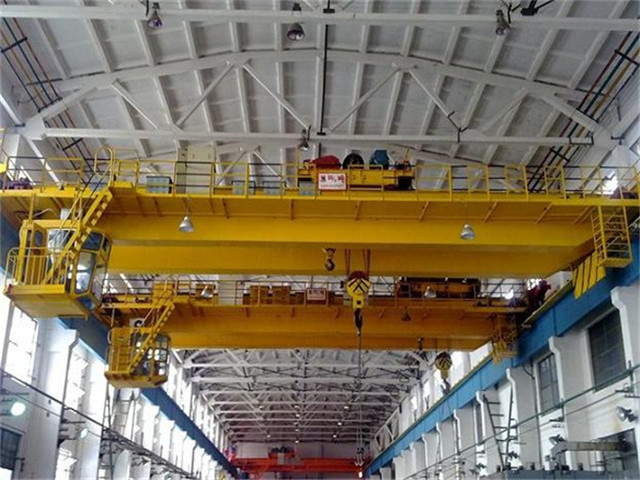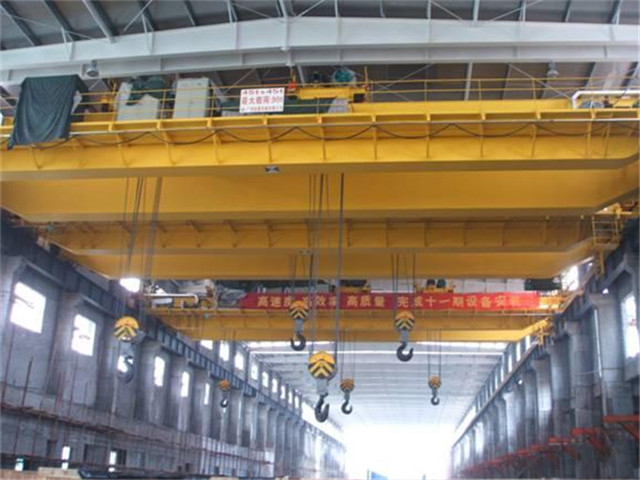The installation of an overhead travelling crane marks the culmination of a meticulous process that brings the heart of material handling operations to life. These towering giants, designed to seamlessly lift and transport heavy loads with precision, require a strategic approach to installation to ensure safety, efficiency, and optimal performance. In this comprehensive guide, we will navigate the intricacies of overhead travelling crane installation, shedding light on the key steps, considerations, and best practices that pave the way for successful crane integration.

Step 1: Thorough Planning Sets the Foundation
Before embarking on the installation journey, meticulous planning is essential. This phase involves assessing the site, determining the crane’s specifications, and ensuring compliance with safety regulations. Factors such as crane capacity, span, height, runway alignment, and power requirements are carefully considered to align the crane’s design with operational needs.
Step 2: Foundation and Runway Construction
The physical foundation for the crane’s runway and supporting columns is laid during this phase. The foundation’s strength and stability are paramount to ensure the crane’s safe and efficient operation. Precise measurements, proper alignment, and adherence to engineering standards are critical to laying a solid foundation.
Step 3: Assembling the Crane Components
The crane’s components, including the bridge girder, trolley, hoist, and end trucks, are assembled according to manufacturer specifications. Precision is crucial at this stage to ensure that all parts fit together seamlessly. The crane’s electrical and control systems are also integrated during this phase.
Step 4: Mounting the Bridge Girder and Runway Installation
The assembled bridge girder is lifted into place using specialized equipment such as mobile cranes or hydraulic jacks. It is then positioned onto the runway rails with precision. Runway installation involves securing the rails to the supporting columns, ensuring alignment and levelness for smooth crane movement.
Step 5: Trolley and Hoist Installation
The trolley, which houses the hoist, is then positioned on the bridge girder. Careful alignment and installation of the trolley mechanisms are essential to ensure balanced and even movement along the bridge.
Step 6: Testing and Calibration
With the crane components in place, a series of tests are conducted to ensure proper functionality. Load tests, operational tests, and safety system tests are carried out to verify that the crane operates as intended. Calibration of the control systems ensures accurate and precise movement.
Step 7: Electrical and Control System Integration
The crane’s electrical and control systems play a pivotal role in its operation. These systems are integrated, and all connections are carefully checked and tested. Ensuring proper wiring, control panel functionality, and communication between components is critical to the crane’s safe and efficient operation.
Step 8: Safety Measures and Training
Before commissioning the crane for full operation, safety measures are reviewed and reinforced. Safety mechanisms such as limit switches, emergency stop buttons, and overload protection systems are tested rigorously. Additionally, training sessions for crane operators and maintenance personnel are conducted to ensure that they are proficient in crane operation, safety protocols, and emergency procedures. Some of the overhead travelling crane manufacturers provide training services.
Step 9: Commissioning and Handover
Once all tests are successfully completed, and safety measures are in place, the crane is commissioned for operational use. This phase involves a final review of all components, systems, and safety mechanisms. Upon successful commissioning, the crane is officially handed over for daily operation.

The Essence of Expertise: Professional Installation Services
While the installation of an overhead top running crane may appear straightforward, it demands a comprehensive understanding of engineering principles, safety regulations, and crane dynamics. Engaging the services of experienced crane installation professionals is crucial to ensure a seamless and error-free installation process.
Benefits of Professional Installation
Safety: Professional installers are well-versed in safety protocols, minimizing the risk of accidents during installation and ensuring the crane operates safely.
Efficiency: Expertise leads to efficient installation, reducing downtime and getting the crane operational sooner.
Compliance: Professional installers are up-to-date with industry regulations, ensuring that the crane installation complies with all safety standards.
Precision: Experienced installers ensure accurate alignment and calibration, optimizing the crane’s performance.
In conclusion, the installation of an overhead travelling crane is a multi-faceted endeavor that demands meticulous planning, expert execution, and unwavering commitment to safety and precision. By adhering to best practices and enlisting the services of experienced professionals, industries can integrate overhead travelling cranes seamlessly into their material handling operations, elevating efficiency, safety, and operational excellence.